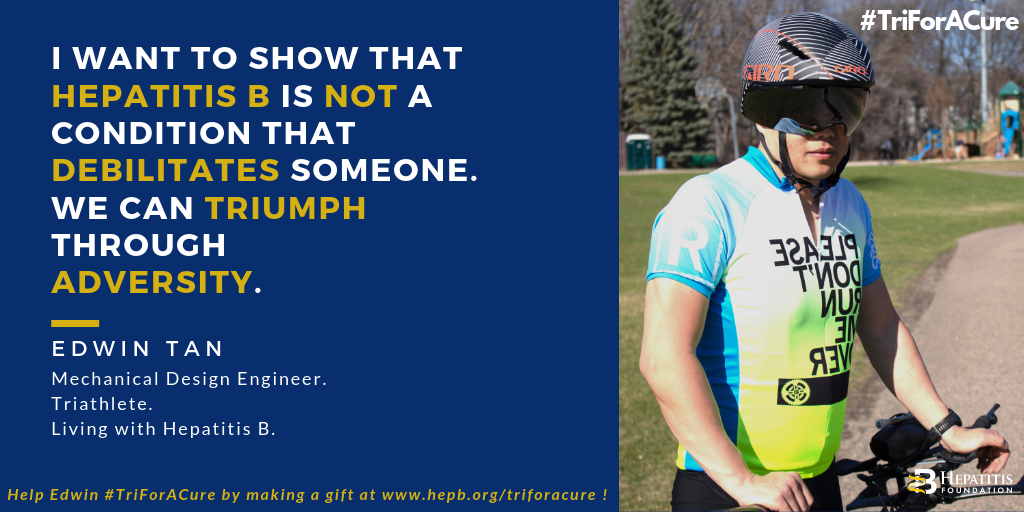Why do some people — who were not vaccinated — never get hepatitis B from their sexual partners? The question is a common one. As a sexually transmitted disease, it may seem obvious that your partner may contract hepatitis B from their partner, especially if you have been together for some time.
It comes down to factors, such as the type of sexual activity you engage in, the viral load (HBV DNA) of the infected partner, and who is on the receiving end of infectious body fluids, especially blood that contains the most virus, and semen.
Having one partner infected, while the other is not, can add more

stress to an already traumatic hepatitis B diagnosis. “It was very confusing and made me question how was it possible I was the only one infected,” said a woman who tested positive while her husband tested negative. “I thought it was possibly a mistake, maybe I was a biological anomaly, which of course I was not.”
Let’s look at the factors that affect who gets infected and who doesn’t when two people have sex.
Viral load: Semen, vaginal fluids and blood all contain the hepatitis B virus (HBV), and the higher the viral load, the more infectious a person is considered to be. However, having an undetectable viral load doesn’t mean you won’t infect someone during unsafe sex. Even if a man has an undetectable viral load, studies show his semen still contains some of the virus and can spread infection, though the risk is lower.
Essentially, if a man tests positive for the hepatitis B surface antigen (HBsAg), he must consider himself infectious.
The role of gender: In heterosexual relationships, uninfected women are at higher risk of getting infected by a male partner infected with hepatitis B, rather than the reverse. Women are on the receiving end of semen, which greatly increases their risk of becoming infected unless a condom is used.
When a woman is infected with hepatitis B, an uninfected man is at risk through direct contact with her vaginal secretions, but that contact is lower-risk than a woman’s direct exposure to infectious semen during intercourse.
However, an infected woman who is menstruating is more likely to spread hepatitis B because blood can contain higher levels of HBV than vaginal secretions. That is why gloves and dental dams are recommended to provide a barrier against exposure.
The type of sexual activity: Certain sexual activities are far more efficient at spreading hepatitis B than others. Oral sex appears to have a lower rate of hepatitis B transmission than vaginal sex. Anal sex carries a very high risk of transmission because of tears in the skin that can occur during penetration, which improves transmission of HBV.
Fingering carries a lesser risk, unless the infected woman is menstruating or a person has bruises or cuts on their hands that allow entry of hepatitis B virus from the body fluid into the bloodstream. In such cases, gloves are recommended.
The “uninfected” partner could already have been infected and cleared hepatitis B: When a person is first diagnosed with hepatitis B, doctors often test his or her partner for only the hepatitis B surface antigen (HBsAg), which indicates a current hepatitis B infection. If they are negative for HBsAg, they are immediately vaccinated. However, this does not mean that they were never infected.
If the partner isn’t also tested for the hepatitis B surface antibody (anti-HBs or HBsAb), then no one knows if the individual was already protected, either due to recovery from a past hepatitis B infection or because they had already been vaccinated.
Hepatitis B is not called the “silent” infection for nothing — many people who get hepatitis B never have any symptoms and never realize they were infected. As a result, a wife, husband, partner or lover who tested negative for HBsAg, may actually have been

infected in the past and cleared the infection and now has protective hepatitis B surface antibodies to forever safeguard them from infection. If they’re immediately vaccinated and retested after the three-dose vaccination, they will test positive for surface antibodies, without ever knowing that their antibodies resulted from a past infection, not immunization.
Bottom line, if one of you have been diagnosed and the other is not infected, it is unusual but not uncommon. Get tested using the 3-panel blood test (HBsAg, HBsAb, and HBcAb) and immediately vaccinated if the uninfected partner tests negative for the hepatitis B surface antibody (HBsAb).
Take a quiz to find out how much you know about hepatitis B transmission: click here.



 covered medications, or
covered medications, or 


 America to help raise money a
America to help raise money a Triathlon in Minnetonka, Minnesota – his first of six races this summer. In just under an hour and a half he accomplished: swimming more than 100 yards, biking 15 miles, and running 3 miles!
Triathlon in Minnetonka, Minnesota – his first of six races this summer. In just under an hour and a half he accomplished: swimming more than 100 yards, biking 15 miles, and running 3 miles!


 with hepatitis B could take a physical and mental toll on an individual and impact how they viewed themselves. Edwin’s observations inspired him to reach out to the Hepatitis B Foundation to
with hepatitis B could take a physical and mental toll on an individual and impact how they viewed themselves. Edwin’s observations inspired him to reach out to the Hepatitis B Foundation to
 that discriminatory policies are often outdated and should be unnecessary – in both schools and the healthcare field – as long as the appropriate procedures and precautions are followed.
that discriminatory policies are often outdated and should be unnecessary – in both schools and the healthcare field – as long as the appropriate procedures and precautions are followed. 